ThermalTake Tenor (cont’d)
Getting away from the front, we find that the Tenor keeps a relatively simple look for the rest of the case. Extra ventilation is situated over the CPU and video card, which certainly seems to make sense.
A head-on shot of the back reveals the major difference of the Tenor in plain view; the power supply is not in the front of the case at all as it was in the other HTPC cases that we’ve looked at so far.
Before diving inside the Tenor, here is one of the feet of the case. Just like most HTPCs, with nice looking feet, the case should fit much better when placed with other pieces of equipment.
Taking off the three-side cover reveals a complicated bracing and drive cage layout, but without the side panels and after the removal of the braces, this actually becomes a very easy case in which to work.
The entire front of the case comes away as well, and in this angle shot here, we can get a better idea of how this case is constructed. One nice aspect that we noticed at this step is that all the cables from the front go through one hole, which has been rounded out carefully.
Taking the two braces away and focusing on the front, we find the three 5¼” drive bays and triple 3½” bay (two of which are externally accessible). To actively bring in cooler air, one 80mm fan is located here as well, but we couldn’t help but notice that there aren’t enough ventilation holes to cover the area of the fan’s blades.
And here, we can finally see just how open the Tenor can get. Looking at the back, it actually looks much more like a typical ATX case, just turned on its side, with two 70mm Thermaltake fans taking care of exhausting the majority of the warm air from the case.
Getting away from the front, we find that the Tenor keeps a relatively simple look for the rest of the case. Extra ventilation is situated over the CPU and video card, which certainly seems to make sense.
A head-on shot of the back reveals the major difference of the Tenor in plain view; the power supply is not in the front of the case at all as it was in the other HTPC cases that we’ve looked at so far.
Before diving inside the Tenor, here is one of the feet of the case. Just like most HTPCs, with nice looking feet, the case should fit much better when placed with other pieces of equipment.
Taking off the three-side cover reveals a complicated bracing and drive cage layout, but without the side panels and after the removal of the braces, this actually becomes a very easy case in which to work.
The entire front of the case comes away as well, and in this angle shot here, we can get a better idea of how this case is constructed. One nice aspect that we noticed at this step is that all the cables from the front go through one hole, which has been rounded out carefully.
Taking the two braces away and focusing on the front, we find the three 5¼” drive bays and triple 3½” bay (two of which are externally accessible). To actively bring in cooler air, one 80mm fan is located here as well, but we couldn’t help but notice that there aren’t enough ventilation holes to cover the area of the fan’s blades.
And here, we can finally see just how open the Tenor can get. Looking at the back, it actually looks much more like a typical ATX case, just turned on its side, with two 70mm Thermaltake fans taking care of exhausting the majority of the warm air from the case.


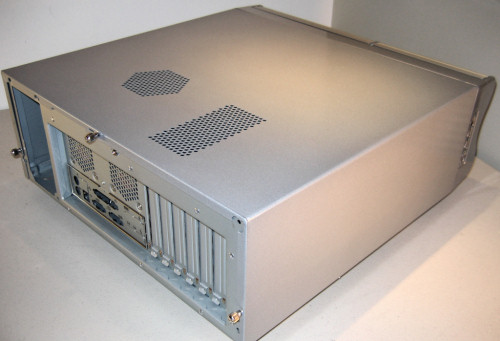

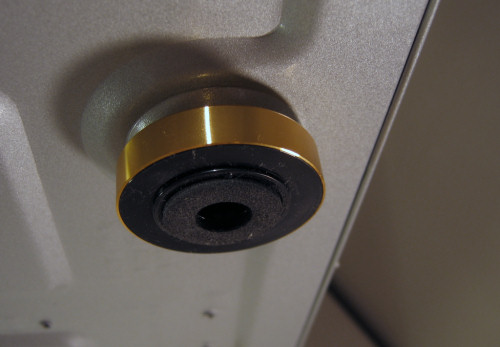
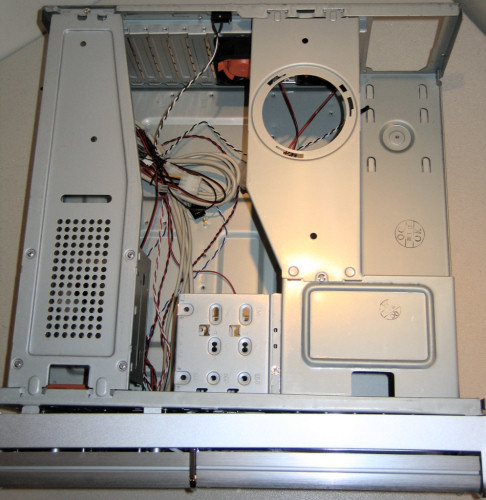
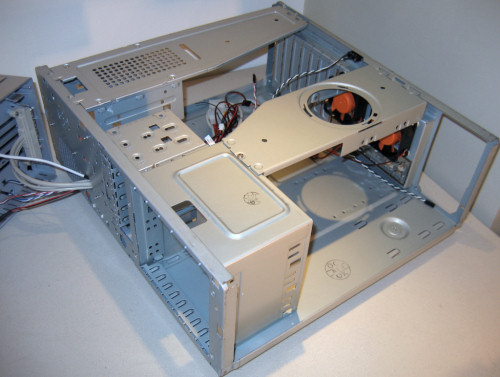
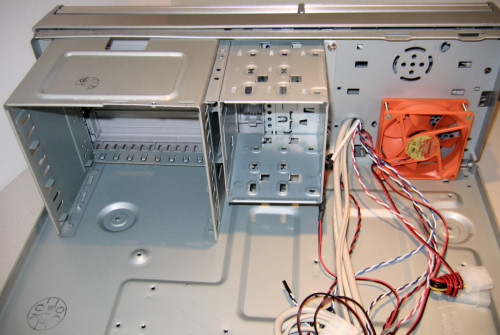
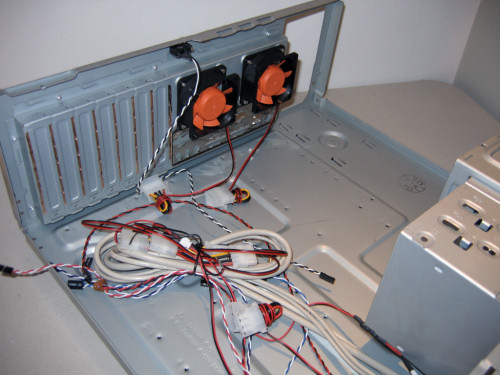








26 Comments
View All Comments
Tamale - Tuesday, November 22, 2005 - link
The 'POS' power supply happens to deliver steadier voltages to the highest-end gear I've gotten my hands on (and no, the P4 test bed isn't the most powerful thing I've tested it in) than anything else that's passed through my hands, and that includes over a dozen power supplies by high-end manufacturers. I'm no reviewer of power supplies yet, as we're still working on that, but I guarantee you that this is a fine unit, especially for the area of case reviews, because in quiet mode it does a fantastic job of staying silent enough to hear the case fans and still provides rock-solid voltages to a stressed-out system. It also gets warm when in quiet mode in the cases that don't ventilate the power supply well enough, which is another good measure of a case. Perhaps most important however is the modular nature of the unit, and even though I've tried other modular units none were as quiet as the MadDog.Secondly, the thermaltake golden orb II at full voltage is quieter than any of zalman's coolers at full voltage. While I understand that the zalman will probably get lower temperatures, It is absolutely essential that the CPU cooler in my test bed make as little noise as possible, and the golden orb II does just that.
The recurring theme in your post seems to me to be that you want 'the perfect HTPC', but the whole idea of a case review is to isolate everything but the case as much as possible, and sometimes hotter components do a better job of illustrating the deficiencies of units than the latest and greatest.
Trust me on this one, if we used the absolute best gear available the comparisons would be much muddier.
As for the subjective comment, my scale of 1-10 can be thought of as a scale of tolerance.. with 5 basically being the threshold... anything higher than that really is 'too loud for the given application' and anything lower than 4 is 'acceptable'. It's not meant to be a numerically accurate scale of any sort. I felt very comfortable with the final subject ratings I gave these cases, because the Tenor and PC-800B just barely passed my personal threshold test, and I believe most users will agree.
tayhimself - Tuesday, November 22, 2005 - link
I hope you realize other PSUs are likely quieter and more efficient than "Mad Dog". Sure the may be quiet to your ears, but thats too subjective to really mean anything. Sadly, you rate the modular nature as being an important issue when it is not. The PSU getting warm in quiet mode may be a sign of a PSU not getting enough airflow.And you say "its silent enough to hear case fans". While that can be true, the PSU and Tt golden orb noise signatures can drown out subtler differences between the cases in terms of noise of the case fans. This is almost obvious from your review as you dont perceive the difference of 9 dB to be significant. Its better to use quality quiet components so you can tell what the case is contributing to the noise spectrum. Since this is about making case buying decisions, the other factors are best isolated.
Avalon - Tuesday, November 22, 2005 - link
Get crackin'.mrgq912 - Tuesday, November 22, 2005 - link
to tired to read the article but first post.mrgq912 - Tuesday, November 22, 2005 - link
okay now that I have that out of my system. How come you guys never review stuff from alienware or voodoopc. Those guys make HTPC's aswell. I never every heard of the players in this review making HTPC's untill today. Well nice to know i have options.Would buy one if i could, untill then i will live with my ati tv wonder elite.
ksherman - Tuesday, November 22, 2005 - link
uh, cuz Alienware and Voodoo are over priced peices of DooDoo... and because this site is more geared around people that build their own machines...